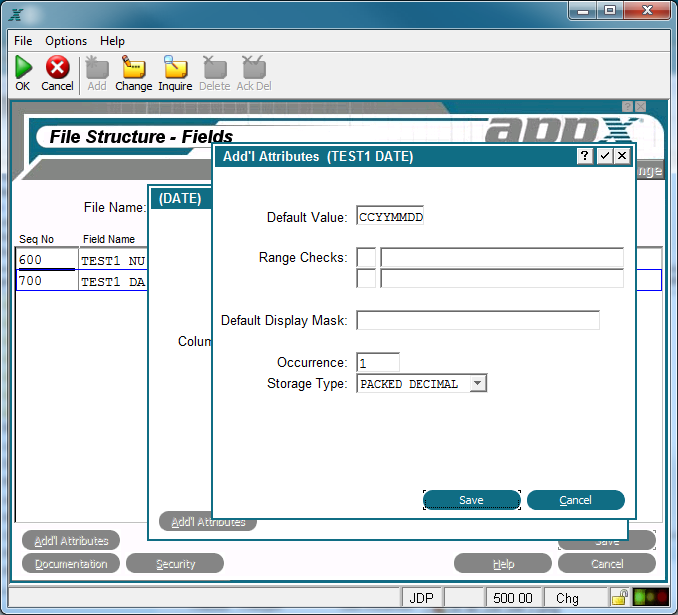Chapter 2-4: Files and Fields |
Date Fields Additional Attributes You can access the Additional Attributes option, shown below, from the Date fields overlay.
Date Fields Additional Attributes Overlay The date fields Additional Attributes overlay contains the following fields: Default Value establishes a starting value for image items whenever they are first displayed in add mode on an input image, unless modified by a user. If blank, there is no starting value displayed on the image. Range Checks defines a series of allowable values that APPX uses for online data validation. The first component represents the relation. The options are EQ (equal to), NE (not equal to), GT (greater than), LT (less than), GE (greater than or equal to), and LE (less than or equal to). The second component represents the value that is assigned to the relation. If you enter two relations, APPX infers an AND relationship. Default Display Mask controls how this field appears to a user on an APPX image, unless overridden at the image item level. If left blank, the date mask specified for the application (in Application File Maintenance in System Administration) is used or, if that is also blank, the date mask specified in System Parameters is used. Refer to the Display Mask (Date/Time)section in Using the Character Based Image Editor for additional information about this entry. Occurrence determines the number of times a field is present in a record. If blank, APPX assumes a value of 1. This field may contain up to five numeric characters and is restricted to a maximum of 32,767. See the Occurrence section for a more comprehensive discussion of this field. Storage Type determines the internal storage format of the date field. The Storage Type options are: BINARY The date is stored in binary format. PACKED DECIMAL stores two decimal digits for each byte. ALPHA stores the external representation of data. The default is PACKED DECIMAL. |
Application Design Manual "Powered by Appx Software"1036 ©2006 By APPX Software, Inc. All Rights Reserved |
